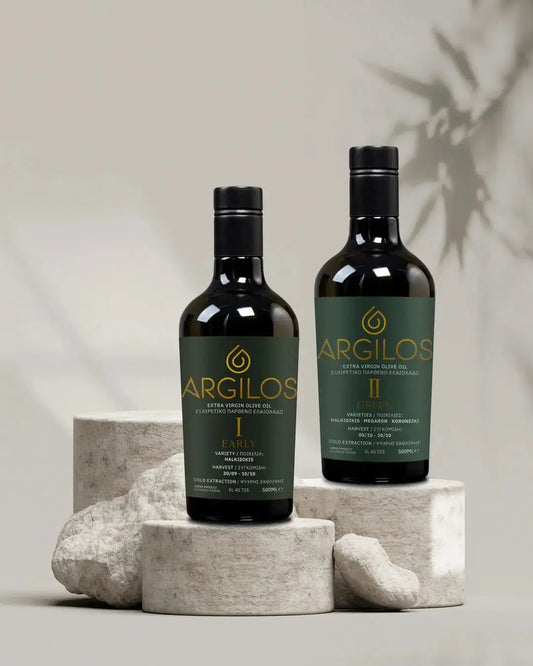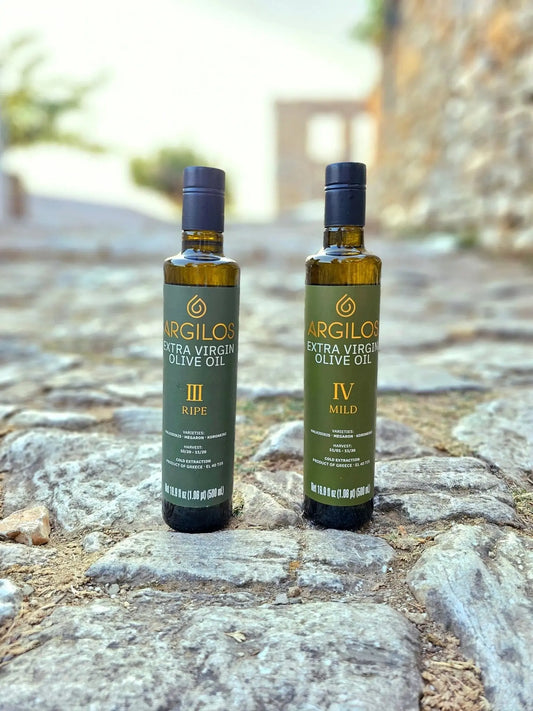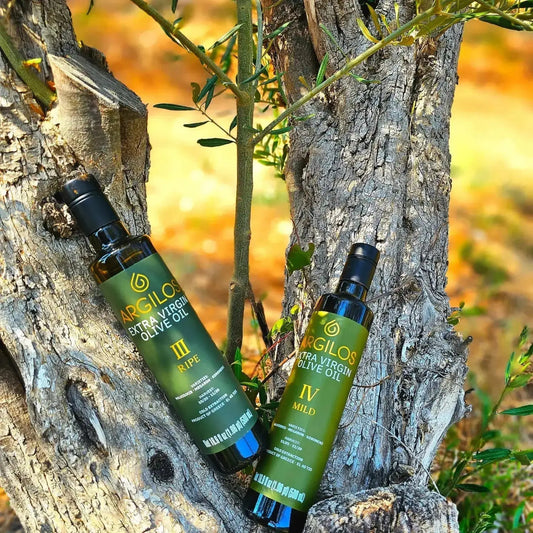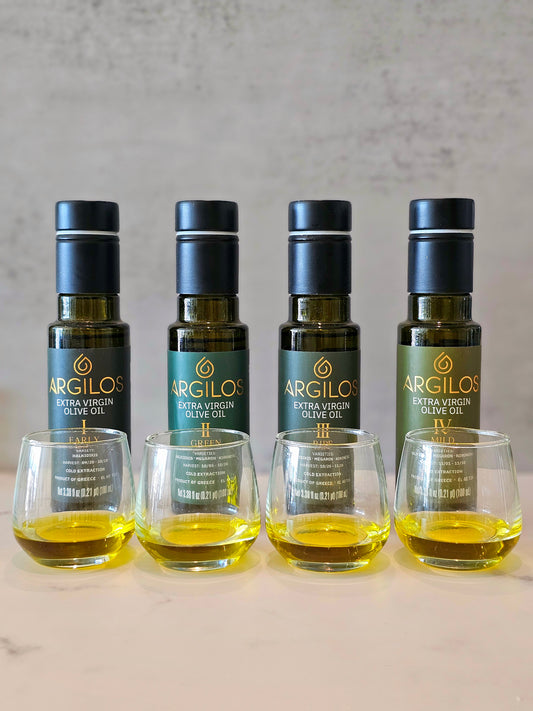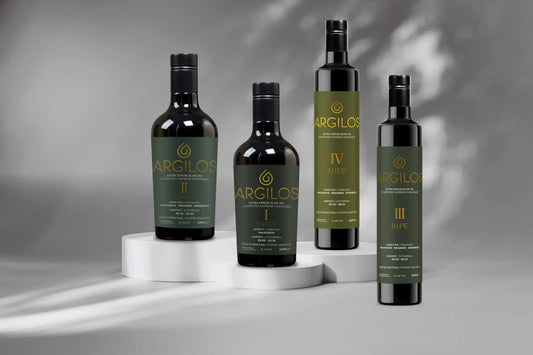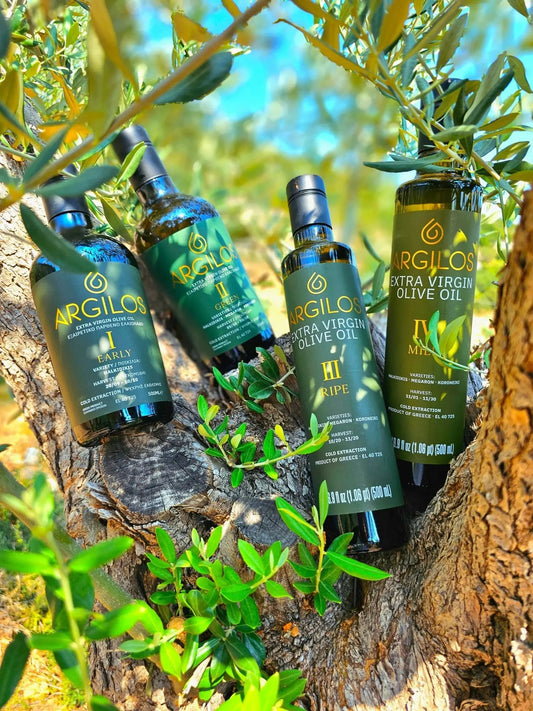Olive oil acidity is one of the most important quality indicators when choosing extra virgin olive oil (EVOO). Understanding acidity levels helps you select premium oils that deliver superior taste, health benefits, and culinary performance. This comprehensive guide covers everything you need to know about olive oil acidity, from scientific definitions to practical shopping tips.
What is Olive Oil Acidity?
Olive oil acidity refers to the free fatty acid (FFA) content in the oil, expressed as a percentage of oleic acid. Contrary to popular belief, acidity has nothing to do with taste—you cannot detect it on your palate. Instead, it's a chemical measurement that indicates the oil's quality and how well the olives were handled during harvesting and processing.
Key Point: Lower acidity indicates higher quality olive oil. Extra virgin olive oil must have an acidity level of 0.8% or less according to International Olive Council (IOC) standards.
Understanding Olive Oil Acidity Levels
Different grades of olive oil are classified based on their acidity levels:
Extra Virgin Olive Oil (EVOO)
- Acidity: ≤ 0.8%
- Quality: Highest grade, cold-pressed, no chemical processing
- Characteristics: Superior flavor, aroma, and nutritional value
Virgin Olive Oil
- Acidity: ≤ 2.0%
- Quality: Good quality but with slight defects
- Characteristics: Acceptable taste but lower quality than EVOO
Refined Olive Oil
- Acidity: ≤ 0.3% (after refining)
- Quality: Chemically processed to remove defects
- Characteristics: Neutral flavor, fewer health benefits
What Causes High Acidity in Olive Oil?
Several factors contribute to increased acidity levels in olive oil:
- Damaged or Overripe Olives: Bruised, diseased, or overly mature olives produce higher acidity
- Delayed Processing: Time between harvesting and pressing increases oxidation and acidity
- Poor Storage Conditions: Exposure to heat, light, or air accelerates degradation
- Pest Damage: Olive fruit fly infestations compromise olive integrity
- Improper Harvesting: Olives that fall to the ground and remain there develop higher acidity
Why Low Acidity Matters
Choosing olive oil with low acidity offers multiple benefits:
Health Benefits
Low-acidity EVOO retains maximum polyphenols, powerful antioxidants linked to:
- Reduced inflammation
- Cardiovascular health support
- Anti-aging properties
- Improved metabolic function
Superior Flavor Profile
Premium low-acidity oils deliver:
- Fresh, fruity aromas
- Balanced bitterness and pungency
- Complex flavor notes
- Clean finish without rancid aftertaste
Longer Shelf Life
Lower acidity correlates with better stability and extended freshness when properly stored.
How to Identify Low-Acidity Olive Oil
When shopping for premium olive oil, look for these indicators:
- Check the Label: Reputable producers display acidity levels on bottles
- Harvest Date: Fresh oil (within 12-18 months) typically has lower acidity
- Certifications: PDO (Protected Designation of Origin) or PGI labels ensure quality standards
- Dark Glass Bottles: Protects oil from light degradation
- Single-Origin: Oils from specific regions often maintain stricter quality control
- Awards and Recognition: Competition winners undergo rigorous acidity testing
Pro Tip: Premium Greek extra virgin olive oils often have acidity levels between 0.2% - 0.5%, well below the 0.8% maximum requirement.
The Greek Olive Oil Advantage
Greece produces some of the world's finest low-acidity olive oils due to:
- Ideal Climate: Mediterranean sunshine and soil create optimal growing conditions
- Ancient Varieties: Koroneiki, Kalamata, and other indigenous cultivars
- Traditional Methods: Small-scale producers prioritize quality over quantity
- Early Harvest: Picking olives at peak ripeness minimizes acidity
- Rapid Processing: Cold-pressing within hours of harvest preserves freshness
Storing Olive Oil to Maintain Low Acidity
Proper storage prevents acidity from increasing after purchase:
- Store in a cool, dark place (60-70°F / 15-21°C)
- Keep away from heat sources and direct sunlight
- Seal tightly after each use to minimize air exposure
- Use within 12-18 months of harvest date
- Never refrigerate (causes condensation and degradation)
Frequently Asked Questions About Olive Oil Acidity
Can you taste the acidity in olive oil?
No, acidity is a chemical measurement and cannot be detected by taste. What you might perceive as "acidity" is actually the peppery, pungent sensation from polyphenols, which is a sign of quality, not high acidity.
What is the ideal acidity level for extra virgin olive oil?
The maximum acidity for EVOO is 0.8%, but premium oils typically range from 0.2% to 0.5%. Award-winning oils often have acidity below 0.3%.
Does acidity increase over time?
Yes, acidity gradually increases as olive oil ages, especially when exposed to heat, light, or air. This is why proper storage and consuming oil within 12-18 months of harvest is important.
Is lower acidity always better?
Generally yes, as it indicates careful olive selection and processing. However, acidity is just one quality indicator. Flavor, aroma, and polyphenol content are equally important.
How is olive oil acidity measured?
Acidity is measured in laboratories through chemical titration, which determines the percentage of free fatty acids (expressed as oleic acid) in the oil sample.
Can high-acidity olive oil be harmful?
High-acidity olive oil isn't harmful to health, but it indicates lower quality, reduced nutritional benefits, and potentially unpleasant flavors due to oxidation or poor processing.
Why don't all olive oil bottles show acidity levels?
Labeling requirements vary by country. Premium producers often display acidity as a mark of quality, while mass-market brands may omit this information.
What's the difference between acidity and pH in olive oil?
Acidity measures free fatty acid content, while pH measures hydrogen ion concentration. Olive oil acidity is the relevant quality indicator, not pH.
References
- International Olive Council (IOC). "Trade Standard Applying to Olive Oils and Olive-Pomace Oils." COI/T.15/NC No 3/Rev. 19, 2022.
- European Commission. "Regulation (EEC) No 2568/91 on the characteristics of olive oil and olive-residue oil and on the relevant methods of analysis." Official Journal L 248, 1991.
- Aparicio, R., & Harwood, J. "Handbook of Olive Oil: Analysis and Properties." Springer Science & Business Media, 2013.
- Boskou, D. "Olive Oil: Chemistry and Technology." AOCS Press, 2006.
- Servili, M., et al. "Health and sensory properties of virgin olive oil hydrophilic phenols." British Journal of Clinical Pharmacology, 2014.
- Psomiadou, E., & Tsimidou, M. "Stability of virgin olive oil: Assessment of natural antioxidants." European Journal of Lipid Science and Technology, 2002.
- Kalua, C.M., et al. "Olive oil volatile compounds, flavour development and quality." Food Chemistry, 2007.
- Cert, A., et al. "Chromatographic analysis of minor constituents in vegetable oils." Journal of Chromatography A, 2000.
Experience Premium Greek Extra Virgin Olive Oil
Discover our award-winning Greek EVOO with acidity levels below 0.3%. Hand-harvested from ancient groves and cold-pressed within hours for exceptional quality, flavor, and health benefits.
Shop Greek Olive Oil

